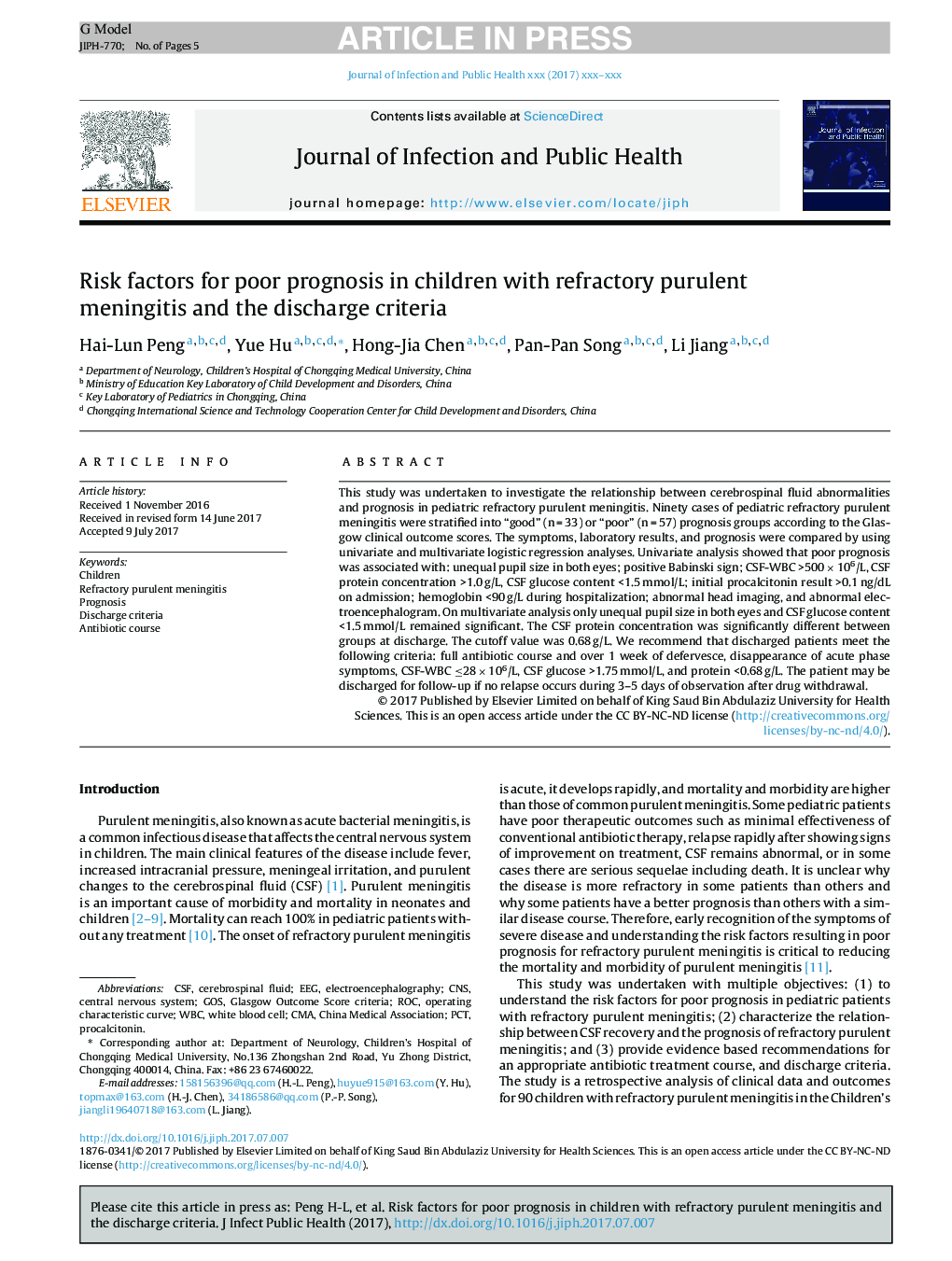| کد مقاله | کد نشریه | سال انتشار | مقاله انگلیسی | نسخه تمام متن |
|---|---|---|---|---|
| 8746809 | 1593368 | 2018 | 5 صفحه PDF | دانلود رایگان |
عنوان انگلیسی مقاله ISI
Risk factors for poor prognosis in children with refractory purulent meningitis and the discharge criteria
ترجمه فارسی عنوان
عوامل خطر برای پیش آگهی ضعیف در کودکان مبتلا به مننژیت منع خفیف و شرایط تخلیه
دانلود مقاله + سفارش ترجمه
دانلود مقاله ISI انگلیسی
رایگان برای ایرانیان
کلمات کلیدی
CMAPCTROCGOSWBCElectroencephalography - الکتروانسافالوگرافیCNS - دستگاه عصبی مرکزیcentral nervous system - سیستم عصبی مرکزیCerebrospinal fluid - مایع مغزی نخاعیCSF - مایع مغزی نخاعیdischarge criteria - معیارهای تخلیهOperating characteristic curve - منحنی مشخصه عملیاتیEEG - نوار مغزیProcalcitonin - پروکلسی تونینprognosis - پیش شناخت بیماریChildren - کودکانwhite blood cell - گلبول سفید خون
موضوعات مرتبط
علوم پزشکی و سلامت
پزشکی و دندانپزشکی
بیماری های عفونی
چکیده انگلیسی
This study was undertaken to investigate the relationship between cerebrospinal fluid abnormalities and prognosis in pediatric refractory purulent meningitis. Ninety cases of pediatric refractory purulent meningitis were stratified into “good” (n = 33) or “poor” (n = 57) prognosis groups according to the Glasgow clinical outcome scores. The symptoms, laboratory results, and prognosis were compared by using univariate and multivariate logistic regression analyses. Univariate analysis showed that poor prognosis was associated with: unequal pupil size in both eyes; positive Babinski sign; CSF-WBC >500 Ã 106/L, CSF protein concentration >1.0 g/L, CSF glucose content <1.5 mmol/L; initial procalcitonin result >0.1 ng/dL on admission; hemoglobin <90 g/L during hospitalization; abnormal head imaging, and abnormal electroencephalogram. On multivariate analysis only unequal pupil size in both eyes and CSF glucose content <1.5 mmol/L remained significant. The CSF protein concentration was significantly different between groups at discharge. The cutoff value was 0.68 g/L. We recommend that discharged patients meet the following criteria: full antibiotic course and over 1 week of defervesce, disappearance of acute phase symptoms, CSF-WBC â¤28 Ã 106/L, CSF glucose >1.75 mmol/L, and protein <0.68 g/L. The patient may be discharged for follow-up if no relapse occurs during 3-5 days of observation after drug withdrawal.
ناشر
Database: Elsevier - ScienceDirect (ساینس دایرکت)
Journal: Journal of Infection and Public Health - Volume 11, Issue 2, MarchâApril 2018, Pages 238-242
Journal: Journal of Infection and Public Health - Volume 11, Issue 2, MarchâApril 2018, Pages 238-242
نویسندگان
Hai-Lun Peng, Yue Hu, Hong-Jia Chen, Pan-Pan Song, Li Jiang,
